Jeweled Stone

Rajasthan is the land of kings. With a glorious history of Rajputs, it has been endowed with invincible forts, magnificent palaces and a rich cultural heritage. The hostile desert environment coupled with continuous warfare, created strong incentives among the people for investing in gold and jewels. These were mobile hoards of wealth that were often the main stay of many a displaced dynasty. The warrior aristocracy of Rajputs made lavish use of jewellery and bejewelled gems encrusted weapons as symbolic affirmations of the sanctity of their caste.
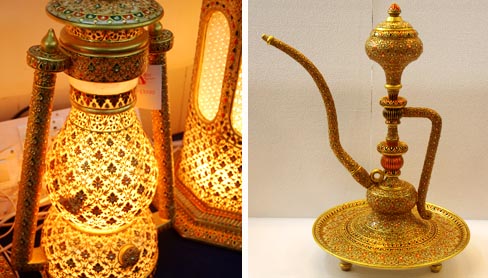
kundan Meenakari Rajasthan
This art of embedding precious jewels and metals into the surface of objects is known as Kundan – Jadai work and was introduced by the Mughals. In this technique, hyper purified gold leaf foil was inserted between the walls and precious and semiprecious stones such as diamonds, rubies, emeralds, sapphires and tourmalines. The silver or gold foil placed below the stones enabled greater reflection of light through the stone, thus increasing its intensity and brilliance. Another form of surface decoration was Meenakari, the fusion of coloured materials such as cobalt oxide for blue and copper oxide for green onto the surface of metals to suggest precious stone inlay work, and was brought to Jaipur on Raja man Singh’s behest.

Both techniques, kundan and meenakari found their way to the commoner through smaller articles like jewellery and decorative objects and the replacement of precious material with accessible ones. A craft that combines kundan jadai work and meenakari with marble is practiced by the Jangid community in Kemla, a small village situated about a hundred kilometers from Jaipur, Rajasthan.
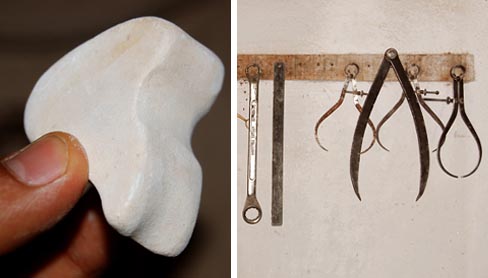
White marble has been prized for its use in sculptures because of its softness, homogeneity and a relative resistance to shattering. Blocks of marble transported from mines are cut into required volumes by craftsmen using diamond blade marble cutters. Some pieces of marble are so huge and heavy, that they are moved with the help of chains mounted on the ceiling of the workshop.
An electric lathe is used to turn the block of marble into the desired shape. A power drill is used to drill big holes for objects like vases and hookas. Finer details and accuracy is dependent on hand held tools; the cheni-hathodi or chisel-and–hammer. A metal file is used to smoothen the surface of the sculpture, after which it is further sanded with emery stone and sand paper to prepare it for surface work.
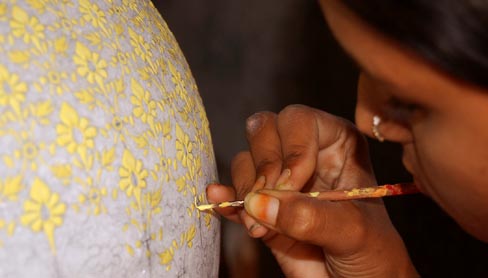
The sculpture is thoroughly washed to get rid of dust and then the artwork is drawn on its surface with pencil. Motifs usually consist of flowers, petals and leaves, animals, portraits etc. Most drawings are freehand, with some help from rulers and other tools. The motifs are embossed by brush application of a mixture of village sand and glue. Once dry, pencil lines are erased and a coat of yellow paint mixed with varnish is applied to designs.
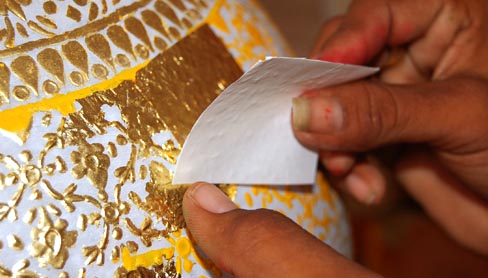
Gold leaves or extremely thin sheets of gold, known as “Varak” are pressed on to painted motifs. As the paint is not yet completely dry, varak sticks to it and the rest is removed to be used again. The gold-gilded patterns are carefully outlined with a very fine brush and then varnished again to prepare it for addition of poster or photo paints.
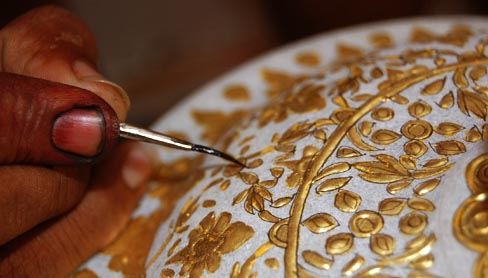
Imitation gemstones and coloured glass, called “Nagina” are stuck to motifs and enhance the beautiful artwork with added glitter. A final coat of varnish seals all the elements together and protects them from scratches.
Sometimes craftsmen incorporate miniature paintings into their work to add interest to this craft. A lavish form of art, the kundan-meenakari work has been beautifully transformed to reach a large number of people, by these innovative craftsmen. In its true magnificence and yet easy approachability, this jewel like work on marble gives us a taste of royalty.
Documentation By ~ Malav Sanghvi

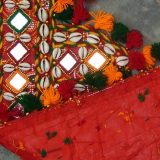









Vinod Agarwal
I want to do meenakari works in temple walls and ceiling in siliguri